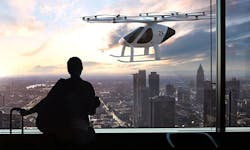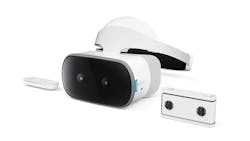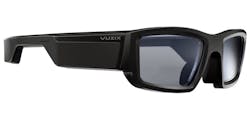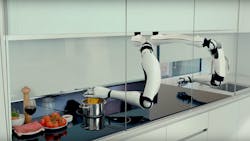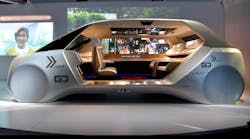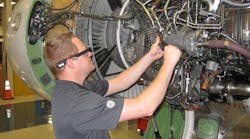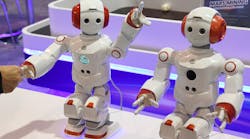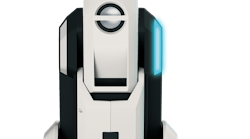It's called the Consumer Electronics Show, but what happens in Vegas every January at the highly anticipated event doesn't always stay in the consumer sector.
Because technology advances at such an exponential pace, a lot of the gadgets and tech are ready immediately for industrial audiences, either in the office or on the factory floor. And with a little extra power here and some more durability there, the innovative robots, phones, drones, 3D printers, and devices marketed for mass appeal can certainly be tweaked for more the robust requirements necessary to boost your productivity.
And when they can't, they at least give your design engineers and product managers an idea of what the future holds.
The 2018 show was no different, with 3,900 exhibitors sprawled out over 2.75 million square feet vying for the tech world's attention. Some succeeded, some didn't, and some still have us scratching our heads as to why they tried.
The Good:
The Volocopter 2X
It's 2018 and we don't have flying cars, but we do have a fully autonomous, battery-powered helicopter. Envisioned by the German company Volocopter as an "Air Uber"—a vehicle to pick you up and fly you over congested roadways to your destination—the 2X has clear use cases for the ultra-rich and super impatient. If you're trying to get a technician to a remote location or survey a busted pipeline, the time saved may justify the high costs of a rental or outright owning one.
As it evolves, we think the 18-rotor transport, which currently has 352-lb. capacity and 16-mile rage, could haul building materials or deliver equipment as well.
Lenovo Mirage Solo with Daydream
The Mirage Solo is called that because it's a standalone device that doesn't require wires or a smart device to view the virtual world contained in the headset. And because it leverages Google's Daydream's WorldSense, you're thrust right into that world, which responds to your body motion, without the need for external sensors.
A separate Mirage camera allows for the capture of 180-deg. video.
The gaming possibilities are endless, as are the training opportunities. Imagine having workers run through assembly procedures with a digitized product—still in the prototype phase—to optimize design, or interact with machinery before anything is even installed in the plant. You would never have an unprepared worker or machine that doesn't live up to expectations, again.
Wi-Charge's product line, the RAYO, KIIK, and LIGHTS, wirelessly transfer power in an open environment, with a transmitter sending infrared beams to a receiver's photovoltaic cell. Meant for smartphones and other small devices, the Israel-based company says the number of receivers can be scaled up to increase power and coverage. Other wireless charging companies have developed systems for a plant's AGVs and AMRs, which this could be used for, as well as keeping "lick-and-stick" IoT sensors constantly charged.
LG Rollable OLED TV Display
My colleague got super excited and wanted to immediately drop $1,000 on this machine, which allegedly folds your clothes for you. (Only a mockup was displayed at CES, so who knows?) You stick a shirt into the conveyor and through the magic of automation, your clothes get magically folded. The company says it can fold an entire load in less than four minutes. It debuted last year with fragrance adding and de-wrinkling features, which were ditched to bring down the price.
Another more heavy-duty automatic clothes folder, the $16,000 Laundroid, also made an appearance.
FoldiMate won't ship until late 2019, so this concept may not be the final version, but what they are showing seems hard to use and susceptible to jams. This a problem office printers still deal with on a regular basis, and that's just paper. Think of what it will do to your favorite cardigan.
It's a nice idea and people obviously want one, judging by the thousands of pre-orders, but just seems like a lot of frustration for a device meant to make a task faster. And four minutes for a load seems a bit slow for the price and potential for a lot of maintenance. It's unnecessary because it will be obsolete in the next few years. Programmable robotic arms, like the ones from Moley Robotics, can already do several tasks in the kitchen, and could be taught to fold the clothes as well.











